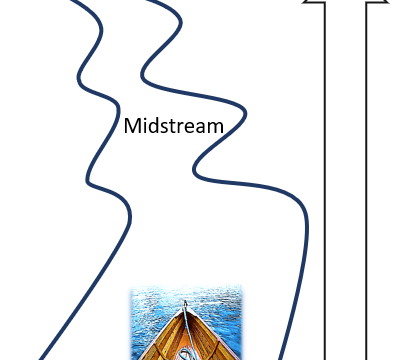The upstream-downstream metaphor helps public health practitioners to choose cost-effective public health interventions. This post curates a set of peer-reviewed articles that deal with the upstream-downstream” metaphor.
1. The upstream versus downstream metaphor to reduce health inequalities
In this article, Naoimh, E. McMahon reviews published literature until June 2020 to find how the upstream-downstream metaphor has helped us frame action to reduce health inequalities.
- Critique the “downstream problem framing”
- Recommend “upstream” policies and programmes
- Industry regulation – e.g. smoke-free legislation
- Increase in minimum wages
- Programmes to change social norms and power relations
- Promote “upstream” approaches
- Programs to promote political literacy and advocacy
- To apply place-based action such as actions of local departments, city councils etc.
- Apply the metaphor to guide the implementation process.
The full text is available for free.
Link to the article: https://academic.oup.com/jpubhealth/advance-article/doi/10.1093/pubmed/fdab157/6288548
In her previous article published in the Critical Public Health Journal, she describes how English researchers interpret the “upstream-downstream” parable.
In Naoimh’s two blog posts, she dissects the upstream-downstream metaphor. In one post she focuses on “upstream” actions for reducing health inequalities. In the second post, she discusses why the metaphor does not always work as expected.
2. Concepts and issues in public health: Culture, Psychology, and the Ecological approach
This article discusses several upstream and midstream interventions; for example education as a midstream intervention. It is an excellent up-to-date summary of the upstream-midstream approaches.
Its full text is available as a PDF.
Link: https://www.jesma.net/index.php/jesma/article/view/16
3. How some effective interventions increase health inequality
Theo Lorenc from the London School of Hygiene and Tropical Medicine details how some although effective increase health inequalities between socio-economic groups. The commonest ones include “downstream” interventions and media campaigns. In contrast, “upstream interventions” such as fiscal methods such as increasing in tobacco pricing, resource provision, and structural workplace interventions reduce health inequalities between socio-economic groups.
Its full text is available as a PDF.
4. How health educators sail “upstream” in this COVID-19 pandemic
Amy J. Schultz et al. argue in this article how health educators in Michigan can contribute to moving “upstream” to address COVID-19. Although they published the article in May 2020 in the Health Education and Behavior journal, their suggestions became a strong advocacy role to push through the “upstream” agenda.
Its full text is available as a PDF.
Link: https://journals.sagepub.com/doi/full/10.1177/1090198120929985
5. Upstream versus downstream interventions to reduce dietary sodium intake
Simon Capewell and Chris Kypridemos in this American Journal of Public Health article compare upstream and downstream strategies aimed at recommending daily dietary sodium levels. They consider individual, worksite, and community interventions as “downstream” interventions. In contrast, policies aimed at reformulating (mandatory as against voluntary) processed food, food labelling, and medical campaigns are considered “upstream” methods. We can find “upstream” examples from Finland, Japan, and the UK.
Its full text is available through this link: https://ajph.aphapublications.org/doi/10.2105/AJPH.2017.303673
6. Proximal versus distal and downstream versus upstream
In 2008 Nancy Kreiger in her thought-provoking article argues to abolish the proximal-distal nexus from public health discourse. She equals proximal to downstream approaches and distal to upstream ones. This discussion broadens our thinking about upstream-downstream thinking.
The full text is available through this link; https://ajph.aphapublications.org/doi/full/10.2105/AJPH.2007.111278
7. Upstream versus downstream climate strategies
This article panel written by JoëlForamitti et al. apply the upstream-downstream metaphor to climate policies. The authors differentiate strategies into three streams: Upstream, midstream, and downstream.
| Stream level | Where regulatory measures are applied |
| Upstream strategies | Source level: where oil extraction and import occurs |
| Midstream strategies | where the oils are refined and transported |
| Downstream strategies | Where the actual emissions occur |
Access to the full text is available through this link: https://www.sciencedirect.com/science/article/pii/S0040162521004923
8. Framing to reduce health inequalities
In 2022, Naomh MacMahon found in her literature review that the authors have used the upstream-downstream metaphor to recommend policies, programs, and implementation processes.
